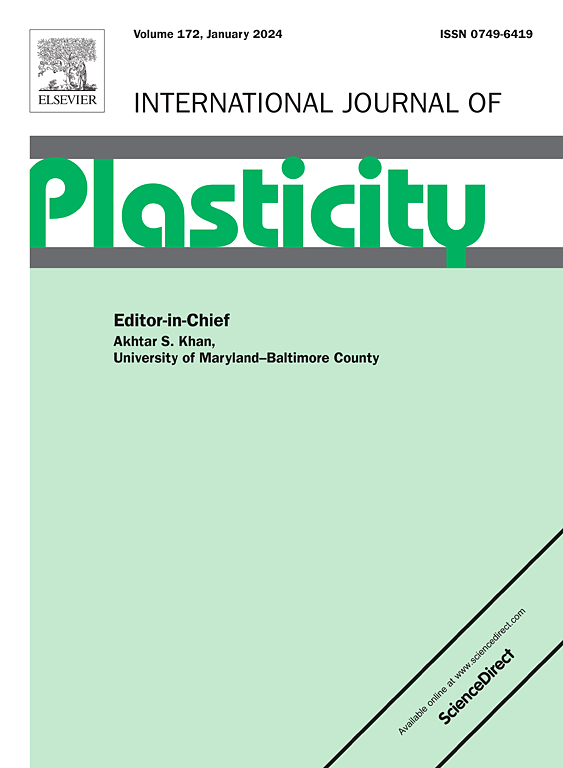Deformation Behavior and Strengthening Mechanisms of an Additively Manufactured High-Entropy Alloy with Hierarchical Heterostructures
IF 9.4
1区 材料科学
Q1 ENGINEERING, MECHANICAL
引用次数: 0
Abstract
Additive manufacturing (AM) of high-entropy alloys (HEAs) typically results in the formation of unique microstructures and deformation mechanisms, sparking widespread research interest. This study delves into the deformation behavior and strengthening mechanisms of an AMed HEA with hierarchical heterostructures. The results show that the alloy consists of the FCC matrix, coherent L12 precipitates, incoherent L21 precipitates with lens-shaped inclusions, and chemical cells. The distribution of the L21 phase and the lens-shaped inclusions are unique phenomena, mainly attributed to local chemical fluctuations during the AM process. The FCC matrix primarily contributes to plastic deformation, with L12 precipitates enhancing strength through ordered strengthening, and L21 precipitates providing strengthening via Orowan bypassing mechanism. Additionally, dislocation strengthening also contributes to the overall strength. Notably, the lens-shaped structures within the L21 phase undergo a stress-induced martensitic transformation during deformation, attributed to their inherent metastability, favorable microstructural locations and grain orientations. These findings deepen the understanding of the microstructures and deformation mechanisms of AMed HEAs, offering valuable insights for the design and optimization of high-performance HEAs in the future.
层状异质组织增材高熵合金的变形行为及强化机理
高熵合金(HEAs)的增材制造(AM)通常会形成独特的微观结构和变形机制,引起了广泛的研究兴趣。研究了具有分层异质结构的AMed HEA的变形行为和强化机理。结果表明:该合金由FCC基体、共格L12相、非共格L21相(含透镜状夹杂物)和化学晶胞组成;L21相和透镜状夹杂物的分布是独特的现象,主要归因于AM过程中局部化学波动。FCC基体主要促进塑性变形,L12析出相通过有序强化增强强度,L21析出相通过Orowan旁路机制增强强度。此外,位错强化也有助于提高整体强度。值得注意的是,L21相中的透镜状组织由于其固有的亚稳性、有利的显微组织位置和晶粒取向,在变形过程中发生了应力诱导的马氏体转变。这些发现加深了对AMed HEAs的微观结构和变形机制的理解,为未来高性能HEAs的设计和优化提供了有价值的见解。
本文章由计算机程序翻译,如有差异,请以英文原文为准。
求助全文
约1分钟内获得全文
求助全文
来源期刊

International Journal of Plasticity
工程技术-材料科学:综合
CiteScore
15.30
自引率
26.50%
发文量
256
审稿时长
46 days
期刊介绍:
International Journal of Plasticity aims to present original research encompassing all facets of plastic deformation, damage, and fracture behavior in both isotropic and anisotropic solids. This includes exploring the thermodynamics of plasticity and fracture, continuum theory, and macroscopic as well as microscopic phenomena.
Topics of interest span the plastic behavior of single crystals and polycrystalline metals, ceramics, rocks, soils, composites, nanocrystalline and microelectronics materials, shape memory alloys, ferroelectric ceramics, thin films, and polymers. Additionally, the journal covers plasticity aspects of failure and fracture mechanics. Contributions involving significant experimental, numerical, or theoretical advancements that enhance the understanding of the plastic behavior of solids are particularly valued. Papers addressing the modeling of finite nonlinear elastic deformation, bearing similarities to the modeling of plastic deformation, are also welcomed.
 求助内容:
求助内容: 应助结果提醒方式:
应助结果提醒方式:


